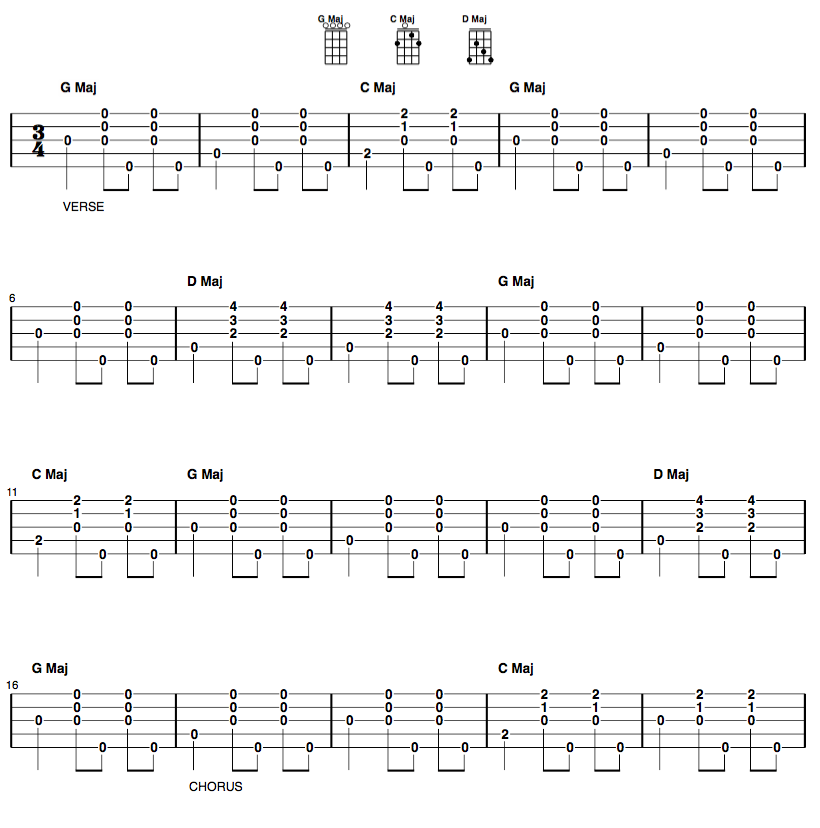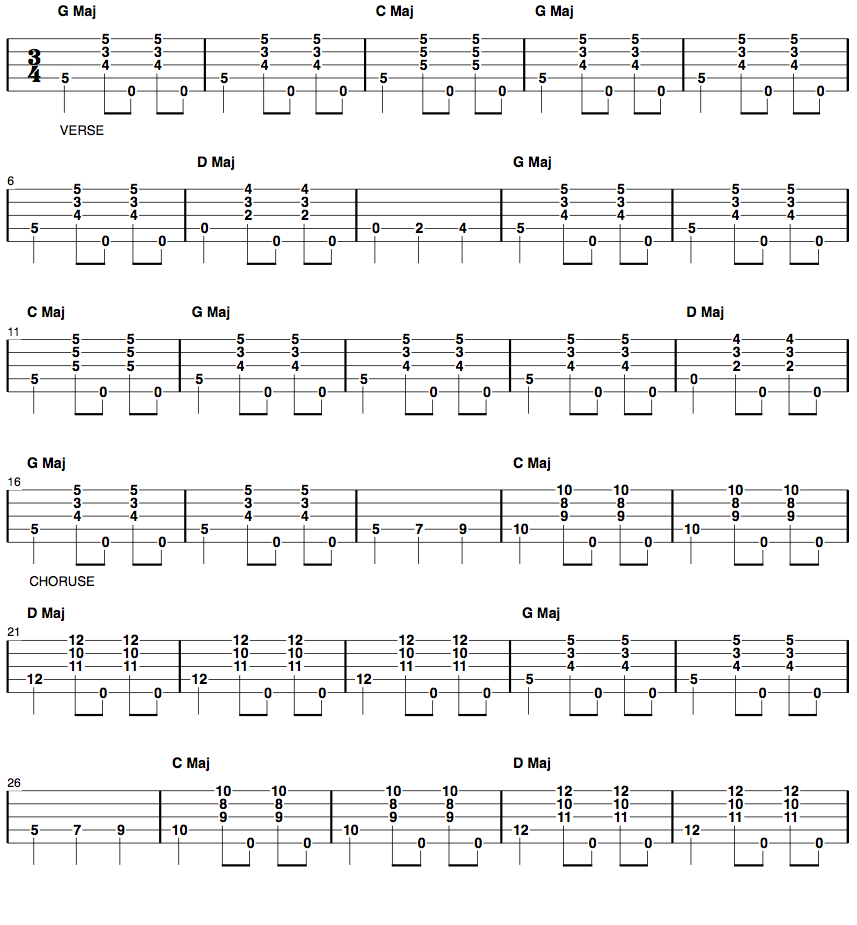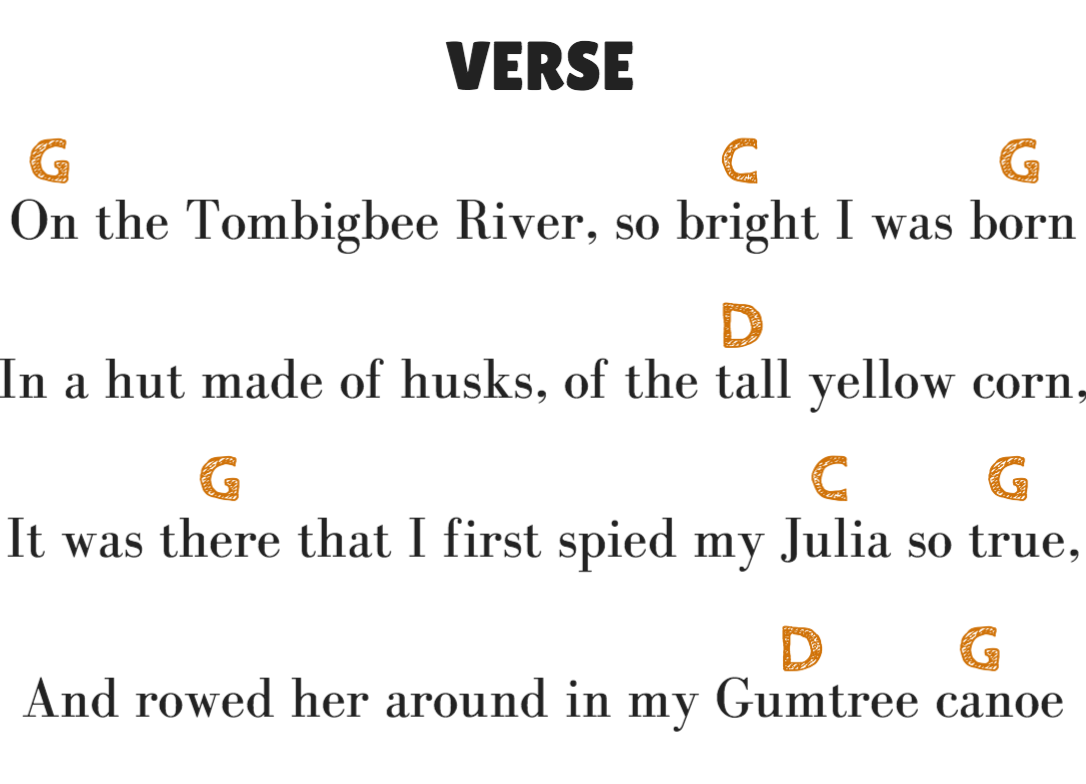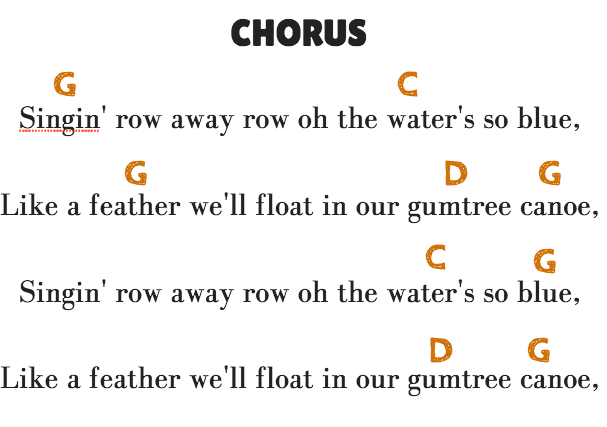Season 3: Songs for Singing!
EPISODE 4: “Gum Tree Canoe”
We pulled from one of those sources – the body of work by Stephen Foster – for our last episode.
Today, we’ll pull from another, one of the greatest singing banjoists of all time: John Hartford. He played “Gum Tree Canoe” in his own distinctive fingerstyle, but here we’ll be learning it in the downpicking manner.
And while Hartford crafted his share of originals, this song was first penned in 1847 during the minstrel era (speaking of great sources for banjo songs….). He revitalized it.
Beyond being our first encounter with Hartford, it’ll also be our first time playing and singing in 3:4, or waltz time. Instead of the “1 and 2 and 1 and 2 and” beat structure we’ve been playing so far, this time the beat is “1 2 3, 1 2 3…” But rather than talk about these numbers in the abstract, the easiest way to get the beat into your head is simply to listen.
Step 1: Know Thy Melody
Give the song enough listens so that you can sing or hum it to yourself, or out loud to surrounding life forms.
When you’ve reached that point, proceed onward to….
Step 2: Find The Chords
We’re playing this one out of standard G (gDGBD) tuning, so we’ll be looking for our chord progression in the key of G. Our usual suspects, the I, IV, and V chords will thus be G, C, and D.
See if you can pick them out for yourself by just strumming along with the song, changing chords when a change seems to be in order, and see what you come up with. Then check your answer below:
Step 3: Play A Basic Backup Pattern While Fingering The Chords
So here’s where you need remember that we’re in waltz time. In our previous time signature, we’ve played a repeating “bum ditty” while fingering the relevant chords as our starting point for backup.
In this case, to make everything come together rhythmically, we’ll instead play a “bum ditty ditty pattern in each measure”. Tabulationally, this is represented thusly:
And sounds like this:
Now we’ll just play this pattern while fingering the chord progression we’ve just discovered to create a basic backup for our voice. Here’s what that basic backup looks like in tab:
And it sounds like this:
Step 4: Dress It Up With “Connective Tissue“
One thing I prefer doing on this tune (and on waltzes more generally) is to play full fingered chords whilst playing backup. All those “ditty” strums that are required in waltz time can make things sound a bit muddy, so fingering the chords allows more control over how much sound you put out behind your voice.
The other thing I do here is play a bit of “connective tissue” between the chords (examples in measures….). These are sometimes referred to as “leading tones,” meaning the notes suggest to the listener what chord is coming next.
Using leading tones in this way requires that we play some of our chords “up the neck.” Here’s what my backup from the video looks like in tab:
And, voila, we’ve got ourselves another song to sing!
You can of course add in a banjo solo in between the verses as I’ve done in the video.
More Playing and Singing Material?
You’ll find an ever-expanding library of arrangements for songs and tunes, with lead and vocal backup arrangements, along with video demos for folks of all abilities inside of the Breakthrough Banjo course.
So, if you’re looking for more material for playing and singing, come and check it out! Click here to learn more.
Go to the Core Repertoire Series Table of Contents




